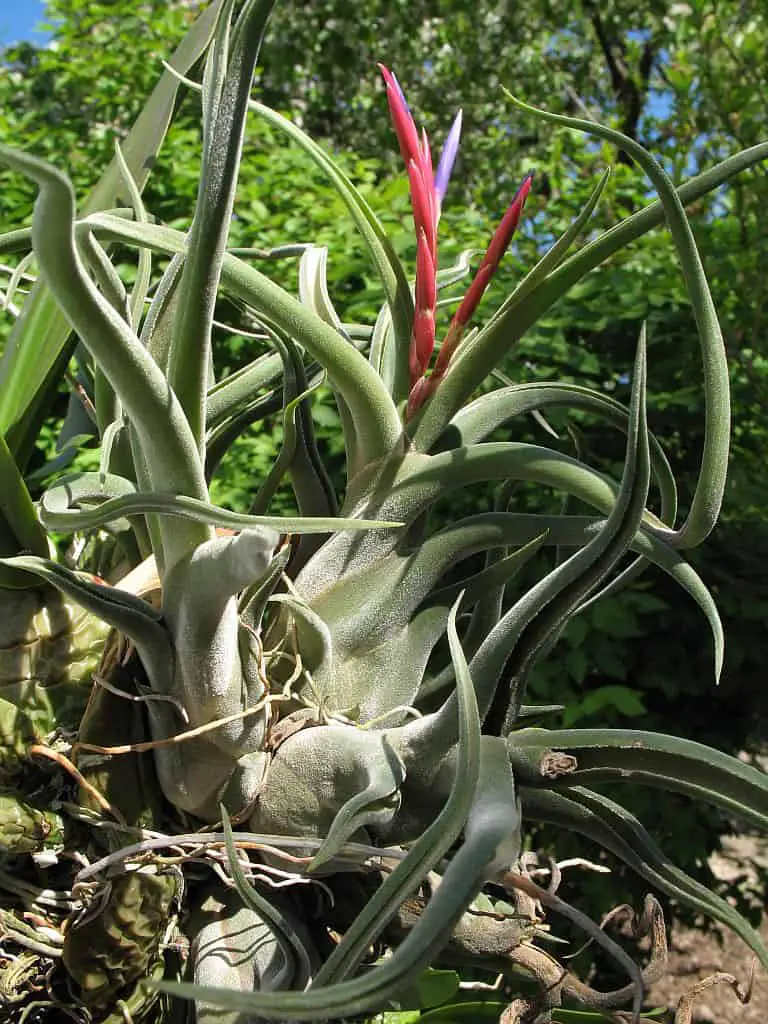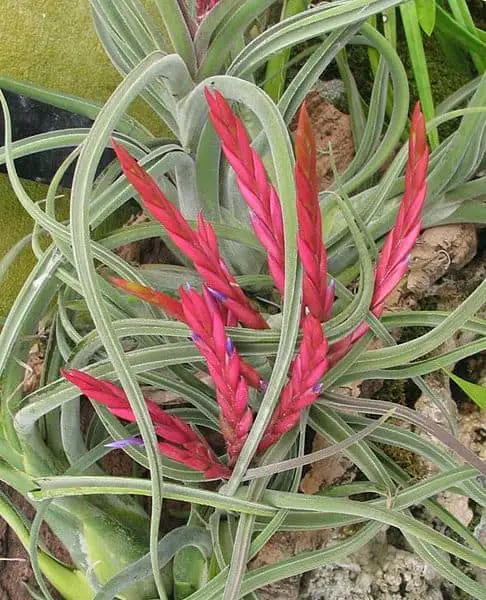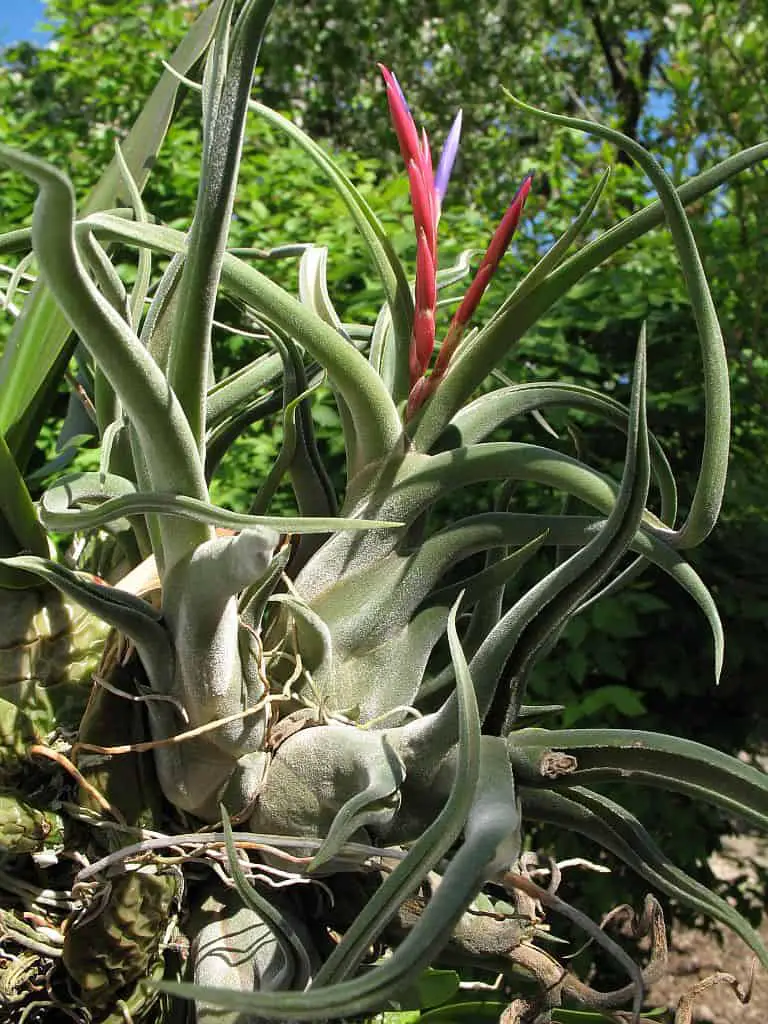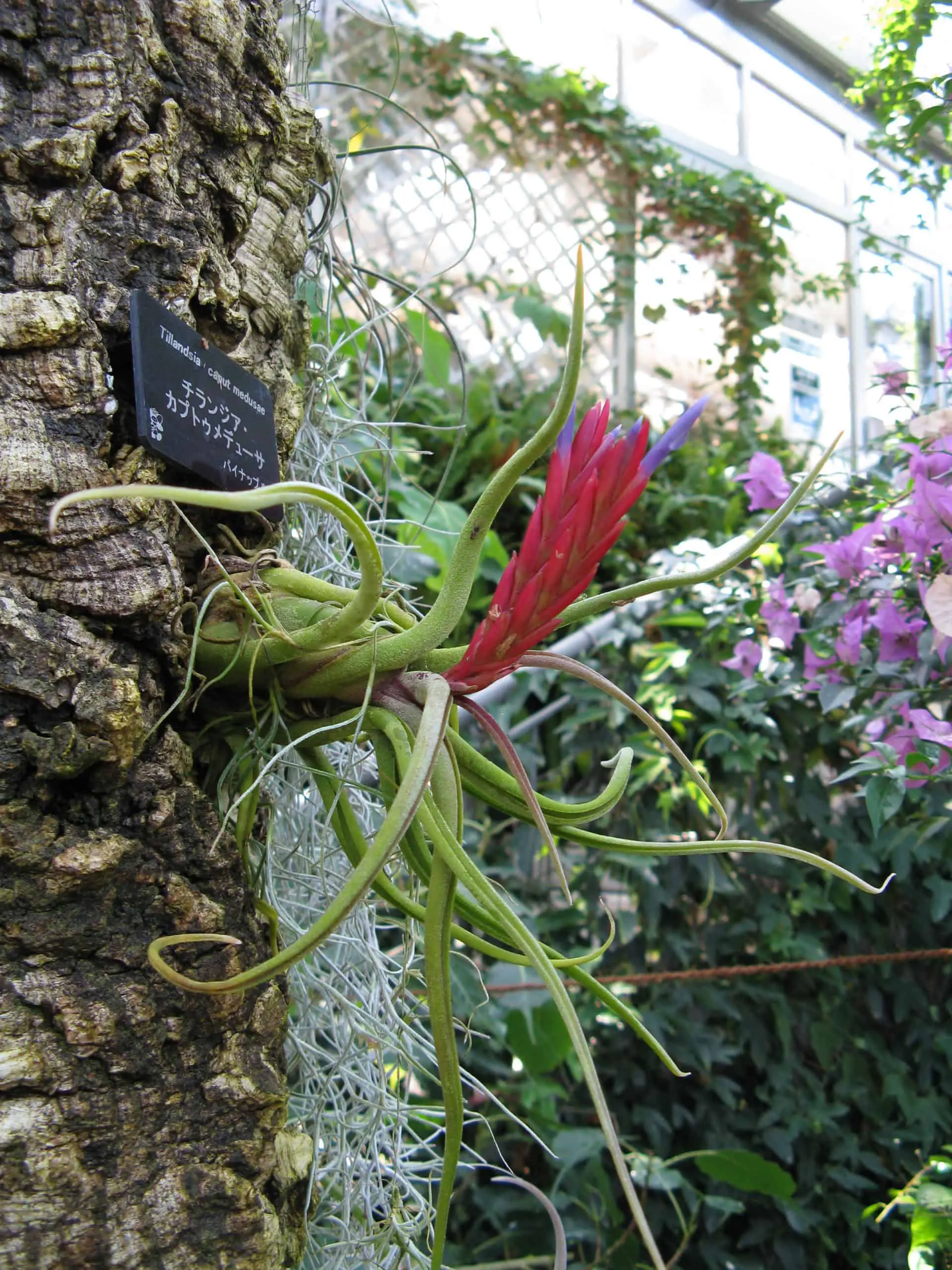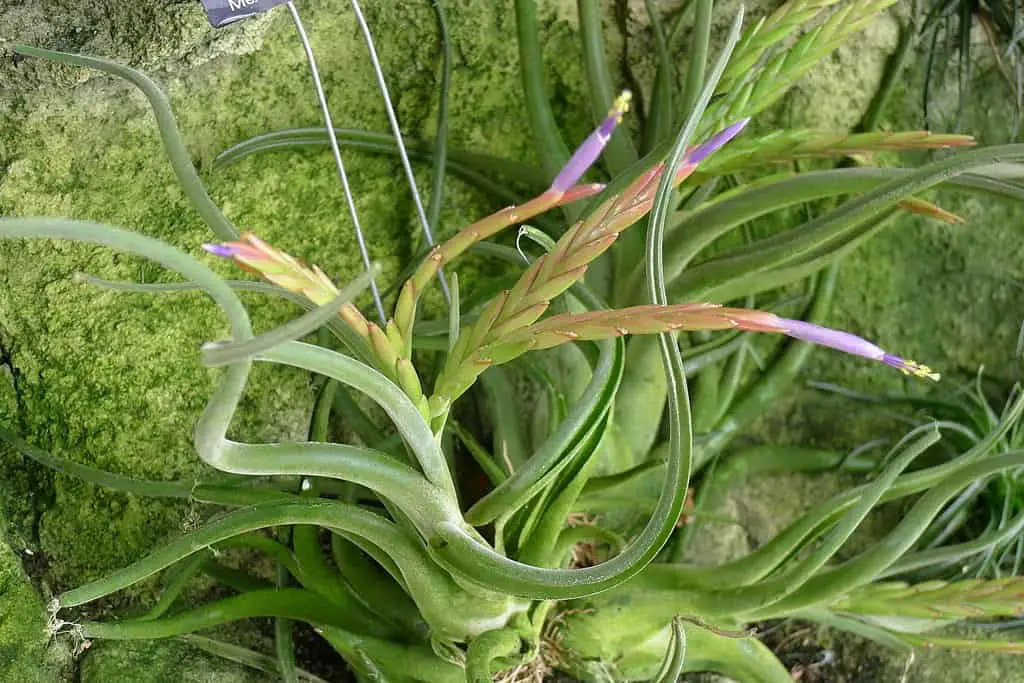With its silvery, serpentine-shaped leaves, Tillandsia caput-medusae adds a bit of flair to any room. These plants look great in terrariums and various little containers. Like other Tillandsias, this is an air plant, and it grows epiphytically. This means it does not grow in soil.
Tillandsia caput-medusae air plants should be placed in an area that is exposed to plenty of bright, indirect light. Like other xeric air plants, Tillandsia caput-medusae prefers to be misted rather than soaked in water. Finally, a dilute fertilizer formulated for air plants should be applied once or twice during the spring and summer.
The rest of this article will discuss, in detail, how to care for Tillandsa Caput-Medusae.
About Tillandsia caput-medusae
“Caput” means head, and “Medusae” refers to Medusa. Medusa was an evil figure in Greek mythology. Her hair was made of venomous snakes, and she turned people into stone.

Tillandsia caput-medusae is native to Mexico and other areas within Central America. In the wild, you will find them growing epiphytically on tree branches that are exposed to a lot of sunlight.
Tillandsia caput-medusae Blooms
As part of its natural life cycle, Tillandsia caput-medusae will eventually produce a flower. In the wild, this plant will bloom during early summer. In cultivation, they typically flower during the spring and early summer. The blooms are pink and purple.
Like other air plants, Tillandsia caput-medusae grows slowly. It can take several years for this plant to bloom. Proper care (adequate lighting, proper watering, sufficient nutrients, etc.) is the best way to encourage your Tillandsia caput-medusae to bloom. Once this plant blooms, it will produce purple inflorescence for several months to a year.
Tillandsia caput-medusae Pups
After blooming, Tillandsia caput-medusae will start to put its energy into producing pups, which are basically baby air plants. The pups will start to grow at the base of the plant. Eventually, the mother plant will die. However, this can take several months.
So what should you do when your plant produces a pup? You can either keep the pup attached to the mother plant in order to achieve a clumped look or you can detach the pup when it is about half the size of the mother plant. It is important that you do not detach the pup too early. The pup needs the nutrients from the mother plant to “kickstart” its growth.
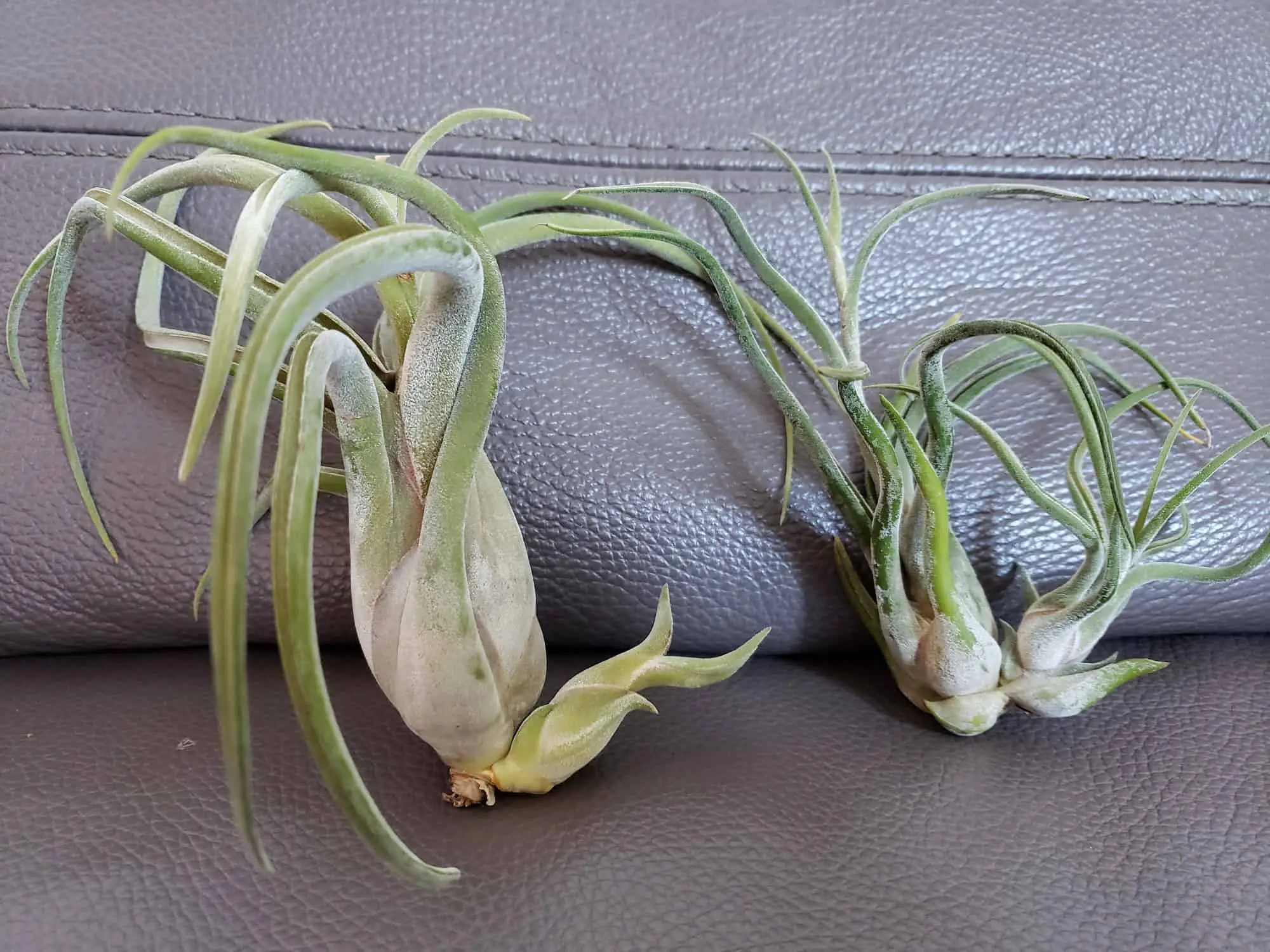
Source: Reddit User theutan
Trichomes On Tillandsia caput-medusae
An important part of Tillandsia caput-medusae is their trichomes, which are the small hairs you see on some air plants. Trichomes are what give Tillandsia caput-medusae their fuzzy, silvery appearance. The word trichome is derived from the Greek word trichōma which means hair. Trichomes can also be found on algae and protists.
Air plants’ epidermal trichomes allow them to absorb water, minerals, and organic nutrients that the plant needs. These trichomes have a nail-like shape, formed by an axis (stem) connected to the internal tissues of the leaf, and by an external shield (Papini et al. 2020). The shield cells die during the last stage of trichome development which enables them to absorb water and nutrients (Papinin et al. 2020).
Tillandsia caput-medusae As A Home For Ants
In the wild, ants like to live in the lower basal leaves of the Tillandsia caput-medusae. David Benzing, who is a well-known Tillandsia expert, carried field observations and laboratory analyses to investigate the impact of ants nesting in the Tillandsia caput-medusae and Tillandsia butzii. His research showed that several different species of ant inhabited air plants. In addition, the number of ants living within the air plant depended on the type of ant.
In many instances, Benzing found that ants inhabited the Tillandsia caput-medusae long-term as indicated by the number of ants in various life stages. Benzing also found that the debris left by these ants contained a significant amount of nitrogen. Interestingly, the Tillandsia plants appeared to have a mechanism that allowed them to absorb the nitrogen produced by the ants. The ants also seemed to discourage other insects from eating the plant. For these reasons, it can be concluded that air plants may actually benefit from the ants living within their leaves (Benzing, 1970).
Your air plants may attract some ants if you keep them outdoors during the warmer parts of the year. However, there is very little to no chance that ants will be inhabit air plants grown indoors.
Tillandsia caput-medusae As A Bioindicator
Interestingly, a variety of Tillandsia caput-medusae, which is called Tillandsia caput-medusae Morren, was used as a bioindicator of air pollution in Costa Rica. Researchers performed an air monitoring study in San Jose City, Costa Rica from February 1993 to October 1994. During this time, the researchers compared the amount of lead, copper, and cadmium in the leaves of the Tillandsia caput-medusae to the lead, copper, and cadmium content of rainfall in the local vicinity. The results of the study showed that Tillandsia caput-medusae can serve as an effective bioindicator for air pollution (Brighigna et al., 1997).
Watering Tillandsia caput-medusae
Tillandsia caput-medusae should be misted rather than soaked. Mist the air plant once or twice a week depending on the amount of sunlight exposure in your home. In addition, drier conditions warrant watering more frequently.
It is also best to water your air plants with filtered water because these plants can be sensitive to chlorine content of tap water.
Tillandsia caput-medusae As A Xeric Air Plant
Air plants are typically classified as either mesic air plants or xeric air plants. Tillandsia caput-medusae is a xeric air plant. Xeric is derived from the Greek word xeros which means dry. The word “Xeric” was coined in 1926 and was commonly used in the scientific world by the 1940s. Xeric air plants do not require as much water as mesic air plants because they tend to be adapted to more arid climates.
Although Xeric air plants will grow roots, they do not function in the same way as most plants’ roots. Xeric air plants’ roots do not absorb water or nutrients. They simply anchor the plant to its host plant or support.
Signs of Underwatering Tillandsia caput-medusae
It is easy to spot an underwatered Tillandsia caput-medusae. The leaves will begin to curl and become involuted. When the plant becomes more hydrated, the leaves will straighten out.
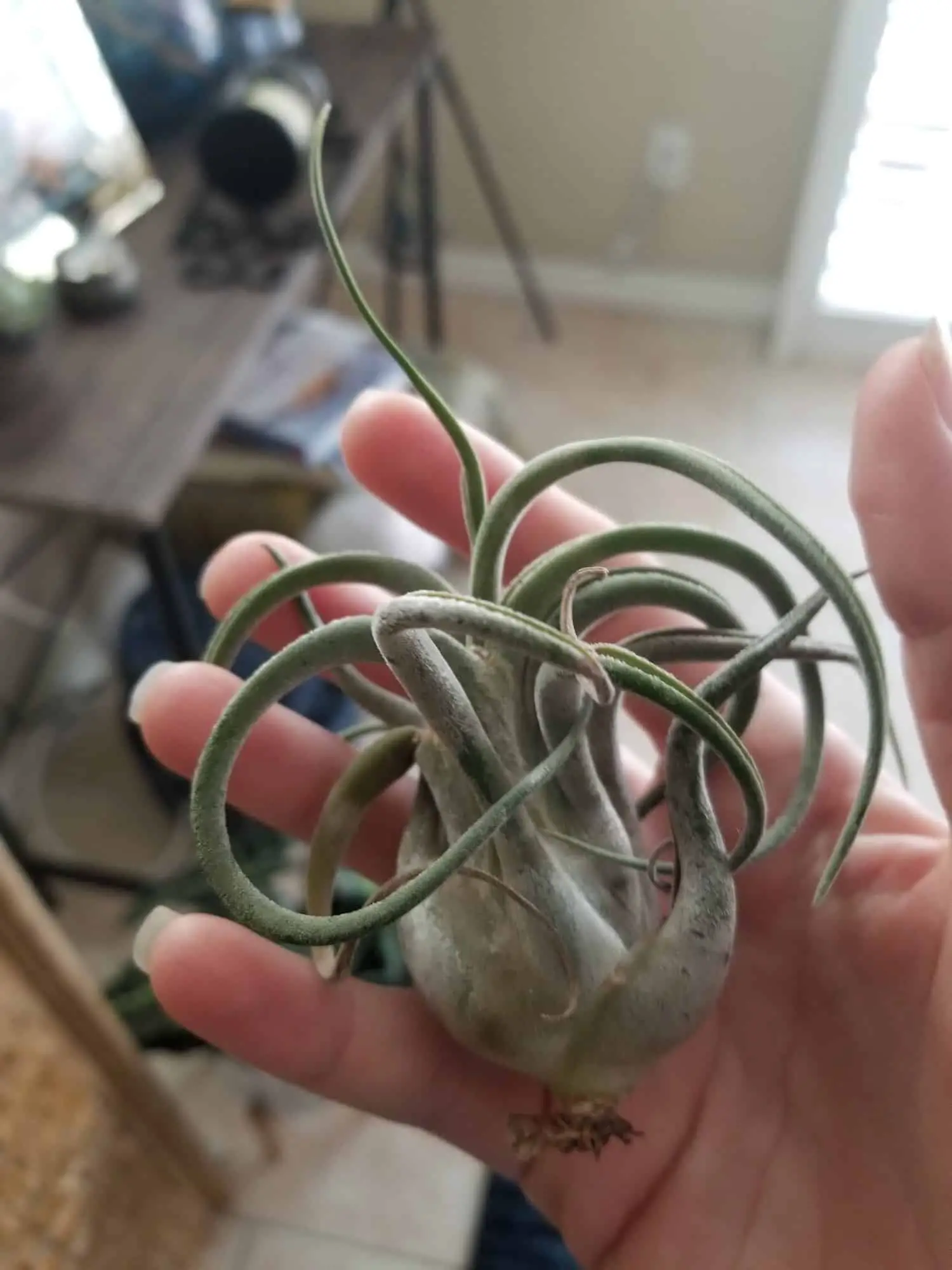
Signs of Overwatering Tillandsia caput-medusae
An overwatered Tillandsia caput-medusae will develop black or brown leaves. In addition, the bulb will become a little squishier.
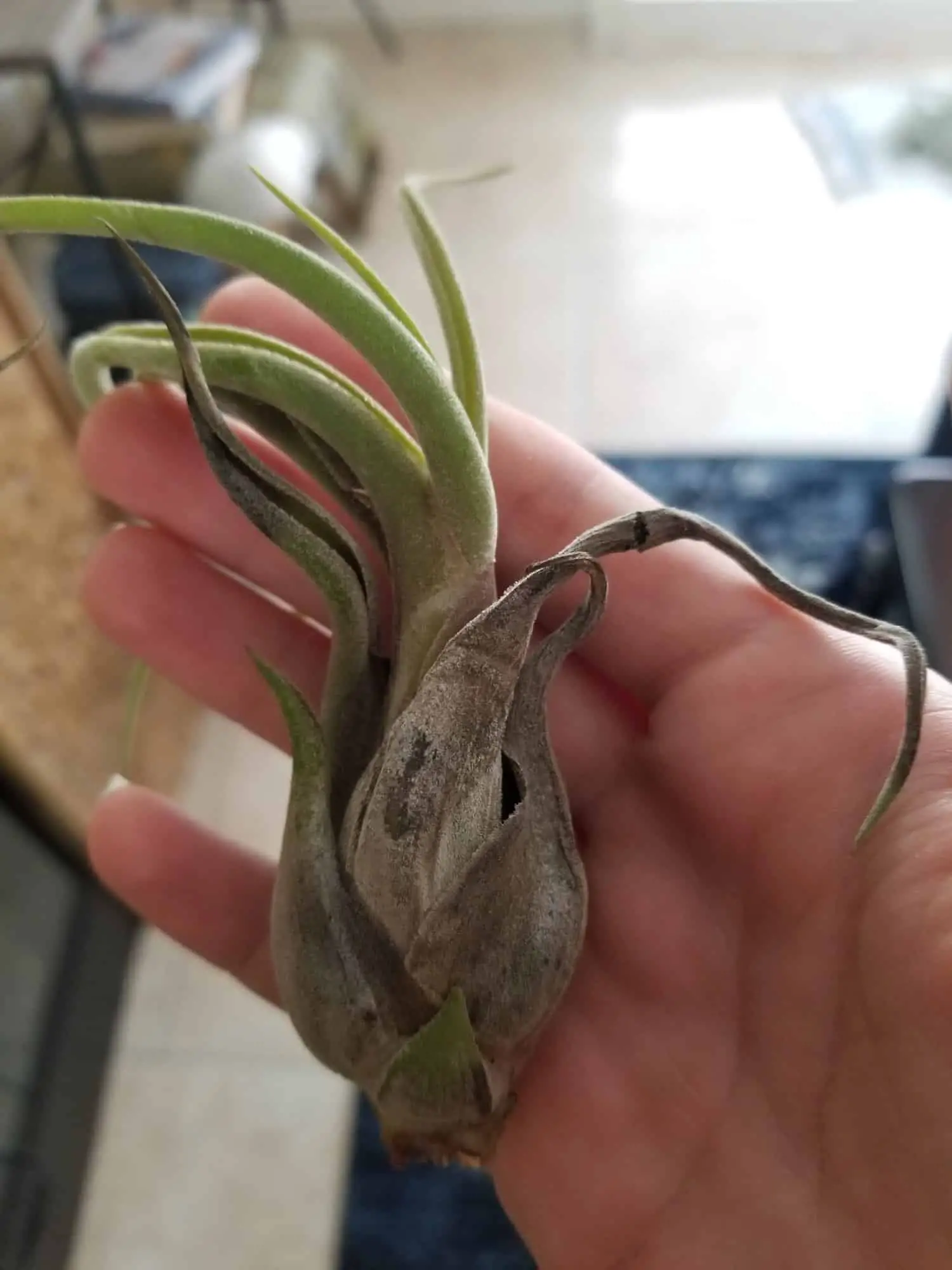
In general, it is better to err on the side of underwatering because it can be very difficult to save an overwatered air plant. To determine whether your Tillandsia caput-medusae has a chance of being rescued, see whether there is any green at the base of the leaves when the dead plant material is removed. If the plant falls apart in your hand, it is a goner. If there is some green at the base of the leaf, you may be able to save the air plant by putting it in a sunny window and cutting back significantly on the watering.
Lighting Requirements For Tillandsia caput-medusae
Like other xeric air plants, Tillandsia caput-medusae requires bright, indirect sunlight. Intense, direct sunlight can scorch the leaves. My Tillandsia caput-medusae plants do well next to a south-facing window and in a bright room.
Fertilizing Tillandsia caput-medusae
Air plants do not require very much fertilization as they can absorb nutrients from the air. However, applying a dilute fertilizer specifically for Tillandsias once or twice a year may help your air plant grow a little bigger.
When you do fertilize, apply the fertilizer during a normal misting. Make sure the fertilizer is dilute to avoid fertilizer burn. It is best to fertilize during the warmer months as this plant tends to slow down its growth during the winter.
Where To Buy Tillandsia Caput-Medusae
You can purchase these types of air plants at some big box stores as well as specialty nurseries. I also recommend checking out the Air Plant Shop, which is an online store that frequently has good sales. Finally, there are several Etsy shops that sell air plants. In general, I’ve found that air plants seem to ship reasonably well compared to other types of houseplants.
Related Questions
Can you trim the roots of an air plant?
Yes, you can trim the roots of xeric air plants without harming the plant. This is because xeric air plants’ roots do not absorb nutrients. These roots simply anchor the plant to a tree or other structure. Some examples of xeric air plants include Tillandsia xerographica, Tillandsia caput-medusae, and Tillandsia tectorum.
Mesic air plants such as Tilllandsia bulbosa, Tillandsia cyanea, Tillandsia andreana, and Tillandisa butzii, do have the ability to form roots that can absorb nutrients. For this reason, you should be more cautious when trimming the roots of these plants.

